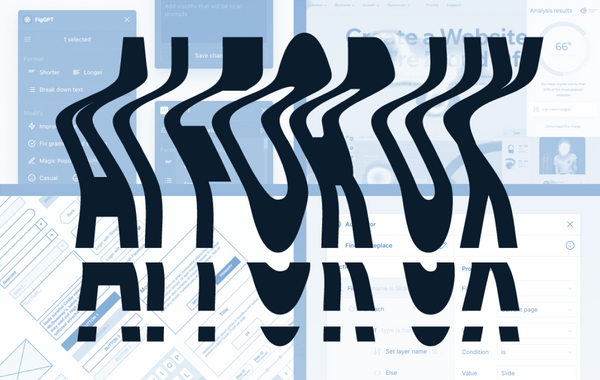10 essential UX best practices to keep in your tool-box
1. Design for your user, not for yourself:
Your user should be your focus at every step of the design process. The most basic principle of interaction design is to meet the user’s needs. What are they looking for? Answer that first. What other products are they familiar with? Learn from those. Are there any common threads or patterns in the products that your users frequent? Borrow. Observe your user’s behavior, analyze existing data, form scenarios and flows and most important of all, test, refine, repeat.
2. Don’t assume
The U in UX does not stand for “you”. At its core, user experience design is about eliminating ego from your process and doing what is best for others. This makes user testing and engagement with your product vital. Put your product in front of an audience, form user interviews, ask questions and don’t be afraid to fail. Your end product will be better for it.
3. There is comfort in familiarity
It’s not stealing, just borrowing. When you begin to learn about your user, you will gain insight into what they are used to interacting with. The more familiar your design is to your audience, the faster and easier it will be for them to use. Consistency in UI, user flows, design patterns, even tone and language are all at play here. You don’t always have to reinvent the wheel, just get some new rims.
4. Make it (for lack of a better word) useable
Duh, right? Well... If only everyone followed this rule. Let’s get one thing straight – Accessibility should not compromise design, but rather give you a toolbox of constraints to create a better product for all. We design products for people to use and it’s crucial that said products can be used by as many people as possible. Consider color blindness – don’t use color as a sole means to communicate something, let it be a compliment. Triple check contrast – There are some great tools out there that can help with this Color Safe is one of them. Create CTA’s that look like buttons and links. Don’t get too crazy (goes back to familiarity). This is just the tip of the iceberg. In general, always try and remove obstacles for your users, design for disabilities and test, test, test. There are tons of plugins and resources out there when it comes to accessibility. Use 'em!
5. Less is more
It can be tempting to want to pack everything in one place, but in web design, the focus should always be on the project goals and conversion. Focus on what is important in that journey from start to finish and everything in between. What is going to lead to more user engagement? Reduce any unnecessary operational and cognitive costs for your user and focus on content value.
6. Do you know who you’re talking to?
Knock, knock? Who’s there? It’s familiarity again. UX-focussed copywriting has really taken off as a best practice in the past year. People are busy, and they don’t want to have to strain to understand or use your product. Make the language simple and easy. Use familiar language, figure out what your audience already knows and what they WANT to know. Consider the tone your communication needs to adopt and keep that consistent. Be clear and be concise.
7. Reaction = Satisfaction
Users crave feedback. If you click something, there needs to be something in return – changes color, changes shape, vibrates, morphs. Give your use SOMETHING. This helps communicate status, gives a sense of direct manipulation of the product, shows results of an action and increases engagement. Define user-initiated triggers, set rules around these triggers, create feedback – What happens/what does your user see? Create loops and modes that determine meta-rules based on different conditions.
8. Hand over the keys and let them drive:
Remind the user where they are within your product using visual cues, allow them to back-pedal so that they don’t get lost in sub-page land, utilize page templates and component based design principles for repetitive functions and improved efficiencies. All of these things help – and users will have a better experience if you give them control over what they interact with, how they interact with it and where they ultimately go.
9. Scanability
It takes a user a half of a second, to evaluate the design of a website, and decide to stick around, or bounce. Make it easy for them to find what they need QUICKLY. Trim content, reuse components and patterns that reduce cognitive spend, allow users to dig deeper if they desire (use CTA’s like “read more”, expandable/collapsible sections, content that can be made discoverable as it is needed, not shown all at once). Learn to listen to your user and do less talking.
10. Last but not least, visual hierarchy
So you’ve already cut slim on content, now it’s time to organize that content to create an obvious emphasis. Show the user where their focus should be. High contrast, scaling elements up in size, adding design elements like a drop shadow or stroke. Things like this make the focus, locatable, navigable and easily accessible.
So, that’s it. See? User experience is more than just a business buzzword. It’s what allows you to define customer journeys, it creates an emotional response from your audience and ultimately, it’s what defines a successful product. A positive experience = a happy user. Good design, an effective build, optimized content – None of that matters if your user cannot efficiently interact with your product. Prioritize UX best practices and give yourself the best shot at flipping a site visitor to a loyal customer/consumer.
Related Posts
4 AI Resources To Add To Your UX Design Toolbox
By:Morgan Plappert on 7/18/2023
These AI-powered tools can help you streamline your workflow and empower you to take your designs to the next level.
Read More »Component-Based Web Design
By:Morgan Plappert on 8/9/2024
Designers and developers are always looking for ways to make handoff easier, collaboration more seamless and our processes better aligned. Automation, consistency and efficiency, without compromising creativity. It’s a constant battle and often times, a balancing act.
Read More »

